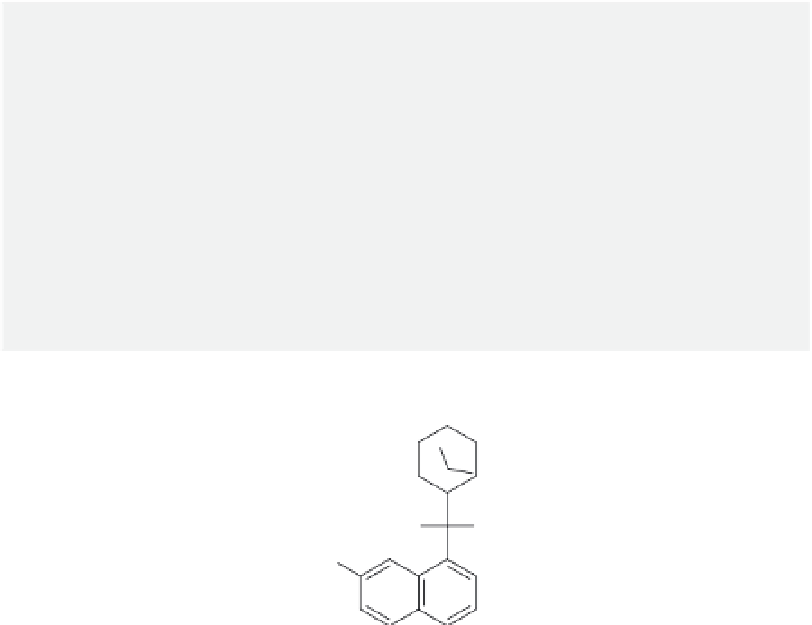Chemistry Reference
In-Depth Information
HISTORICAL NOTE
In the early 17th century, Jesuits brought back to Europe the cinchona bark known
as Peruvian bark. It was believed to be the first introduction of cinchona to the
Old World. The Spanish used the bark to reduce malaria among their conquer-
ing army troops. Eventually, expeditions to the New World from France and the
United Kingdom followed.
The botanical name of the genus Cinchona was given by Linnaeus in 1742,
from the Indian name Quinaquina. Quinine was first isolated in 1820 from the
bark of cinchona. Today, it is still one of the most effective drugs for the treat-
ment of malaria.
R
N
HO
H
R'
N
FIGURE 10.12
The structure of quinine, the antimalarial drug from the cinchona bark.
10.5
ANTIMALARIAL DRUGS OBTAINED FROM
SOUTH AMERICA AND CHINA
10.5.1 Q
uinine
Another example of a drug derived from a plant source is quinine from the South
American cinchona bark,
Cinchona officinalis,
, to treat malarial diseases. Quinine
(Figure 10.12) is an antifever agent and is especially important in treating malaria.
The bioactive compounds include cinchona alkaloids, one of which is quinine, R =
vinyl; R′ = methoxyl.
10.5.2 a
rtemiSinin
Artemisinin (Figure 10.13) is also an antimalarial drug, discovered in the leaves of
Artemisia annua
(annual wormwood).
10.6 ANTICANCER DRUG: TAXOL FROM THE PACIFIC YEW
Paclitaxel, also known as Taxol
®
(Figure 10.14), is a diterpenoid. It was first isolated
from the bark of Pacific yew trees (
Taxus brevifolia
).




Search WWH ::

Custom Search